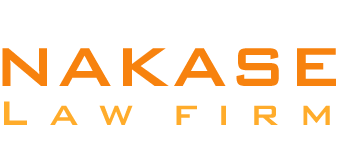Introduction
By signing Senate Bill 553 (also known as the “Workplace Violence Prevention Act” or “WVP Act”) on 30th September 2023, Governor Newsom mandated that the majority of California companies create and carry out a thorough Workplace Violence Prevention Plan. Three separate but connected criteria are also included in the WVP Act: regular training on workplace violence, the establishment and upkeep of a workplace violence record, and recordkeeping. Commencing on 1st July 2024, all criteria of the WVP Act must be met.
Who Are the Covered Employers under the SB 553 Workplace Violence Act?
In general, the SB 553 Workplace Violence Act covers “all workers, their places of work, and employer-provided accommodation,” with six specific exceptions. Only the sixth one provides significant relief to companies by exempting businesses with less than ten staff members, provided that their place of employment is not open to the public and that they have a satisfactory injury and illness prevention plan as required by Section 3203 (Title 8) of the California Code of Regulations.
Of those, four are applicable to niche companies, the fifth exempts workers who work remotely in a location of their choosing that is independent of their employer, and the sixth one offers significant relief to employers.
Requirements
- First and foremost, create and carry out a plan to prevent workplace violence
According to the WVP Act, covered companies must create and keep up a documented Workplace Violence Prevention Plan that is customized for each of their covered locations. A company in California with five sites across the state, for instance, might require provisions in the policy for each of those locations. The following information must be included in the plan, among other things:
With the goal of assisting employers in creating their own plans, Cal/OSHA published an example plan.
- Establish a Training Program to Prevent Workplace Violence: SB 553 Workplace Violence Act
Effective workplace violence prevention training must be created and implemented by covered employers at the employees’ place of employment. Employees must learn about the Plan and how to report and address workplace violence risks during these trainings. According to the WVP Act, any instruction must be employee-accessible and include vocabulary and content appropriate to the employees’ level of education, comprehension, and chosen language.
Additionally, the WVP mandates that employers provide additional training (1) once a year, (2) if new risks are discovered, and (3) whenever the Plan is modified. The extra instruction needed in scenarios two and three may just cover the fresh workplace violence risk or the modifications made to the plan.
- Keep track of incidents of workplace violence as mandated by the SB 553 Workplace Violence Act
Employers have to keep records of all workplace violence incidents in accordance with the WVP Act. These records need to contain:
- A thorough account of the incident.
- Any repercussions caused by the occurrence;
- A description of the individuals involved; and
- The type of workplace violence that occurred.
- Establish & Uphold Recordkeeping Practices
The WVP Act stipulates specific recordkeeping obligations, such as keeping records.
Employees must be able to simply and freely access these documents upon request.
Looking Ahead: Upcoming Compliance Actions under SB 553 Workplace Violence Act
Because the rules were not published prior to the WVP Act’s effective date, businesses should continue to review and update existing Plan and WVP Act procedures whenever new regulations are available. The WVP Act mandates Cal/OSHA to put forward interpretive regulations.
Sources:
1. Section 6401.9 of the California Labor Code codifies the WVP Act.
2. Exempt categories list:
-
- Health care establishments, service categories, and operations governed by Section 3342 (Title 8), California Code of Regulations;
- Employers who adhere to Section 3342 (Title 8), California Code of Regulations
- Specific facilities run by the Department of Corrections & Rehabilitation; and
- Specific law enforcement institutions
3. Whether the re-training need is triggered by just significant modifications to the Plan is not made clear by the WVP Act.
- Methods for locating, assessing, & addressing workplace violence risks must be finalized.
- Procedures for communicating with employees about issues related to workplace violence, such as:
-
- How to report a violent incident or danger of violence,
- How to investigate concerns raised by workers, and
- How to notify employees of the findings of the investigation & any corrective measures that will be implemented.
- Protocols to guarantee staff participation in the creation and execution of the plan.
- Procedures that enable managers and staff to react to and stop workplace violence events in an efficient manner.
- Guidelines for the Plan’s regular evaluation and revision.
- Information about the required introductory training that staff members will receive.
- Determine who is in charge of carrying out and updating the plan.
- Documentation of a covered employer’s identification, assessment, and remediation of workplace violence hazards for a minimum of five years.
- Records and investigative files of violent incidents that occurred at work have to be kept for a minimum of five years.
- Records of mandatory training for a minimum of a year. It includes the training’s content or synopsis, each participant’s name and job description, and the names and credentials of the trainers.































